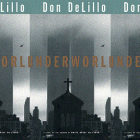Structure: What Writers Can Learn from Visual Artists

Of all the rules that artists follow, this one is paramount: never ever fill in details before the structure is done.
Painters sometimes spend hours sketching before ever touching the canvas. And when they finally do, they build their work slowly, layering in color, laboring on the drawing underneath, roughing in the composition before tightening it up. And once the structure is securely in place, it takes vigilance to ensure it isn’t weakened or lost. Have you ever wondered what an artist is doing when she steps back from her easel and squints? She’s blurring out the details to see beyond them and take stock of the form underneath.
For years, I earned a living by this rule, sculpting superheroes and cartoon characters. Batgirl, Superman, Jimmy Nuetron, Big Bird, Bugs Bunny, Marge and Bart Simpson—hundreds of my original prototypes line the shelves in my studio.
Each figure began with a block of clay. I’d work the shape from all angles, adding and subtracting to it, leaving tool marks everywhere. With every change I’d step back. I’d look at it from above, below, and every angle in between. I often used an old art school trick and looked at it upside down in the mirror, all in an effort to look through the clay and see the structure of the figure underneath.
If my goal were to create Superman throwing a punch, the shoulder bones would have different and particular alignments. This would rotate his spine and impact the position of each hip and knee. If any one of these adjustments were even slightly off, it would be glaringly obvious. No amount of surface detail would be able to hide the fact that the bones are misaligned underneath.
My work as a sculptor has trained me to write in the same way. When I start a piece I work it from all directions. I jump back and forth from section to section in no particular order. I leave broad ideas and impressions everywhere. I make notations and draw charts. I don’t write in complete sentences. I don’t bother with spelling, and I don’t fuss with exacting language.
Readers will sense if I’ve crafted my dialogue before establishing the architecture of my characters and the dynamics between them. They will know if I’ve constructed my scenes before my story line was complete. They will discern when the inner value system of my protagonist doesn’t mesh with her actions even if they’re only slightly off. They will see these things as easily as they will register a defiance of the human anatomy if Superman’s fist is launching forward but his shoulder is pulled back.
The rush to focus on detail, to polish sentences or finish scenes can be hard to resist. Well-crafted language, like the surface detail of a sculpture can be dazzling, but imagine laboriously etching in the fine lines of Big Bird’s feathers only to realize that what the sculpture needs is a tilting of the head. You’d have to go back and change every last quill. The position of the head will change the feathers at the shoulders and this will change them at the knees. The ripple effect will extend until you reach his birdlike fingers and toes.
Understanding your work from the inside out is the only way to master it. I once did a sculpture of Elvis and the licensing department at Graceland came back with one terse criticism: “The mouth is wrong.” The curl of Elvis’s lip is iconic. I could have spent hours reworking it. But I’ve been trained to look at the bones. The mouth, it turned out, was not the problem. What the expression needed was a bit more clay on the cheek. When the lip turns up the muscles on the cheekbones do, too.
Whether it’s a bust of Elvis, a Jackson Pollock painting, or an Emily Dickinson poem, every piece of artwork or writing has a structure to it. Every word or drizzle of paint should work in relationship to all the others. If you add or subtract a single line, it changes all of them.
When a scene isn’t working or your characters’ dialogue isn’t ringing true, try looking beyond the details to the anatomy of your work. What are the dynamics at play in your scene? What is the engineering that makes your characters tick? Because the only way to fix what’s wrong is to first understand how it works.



